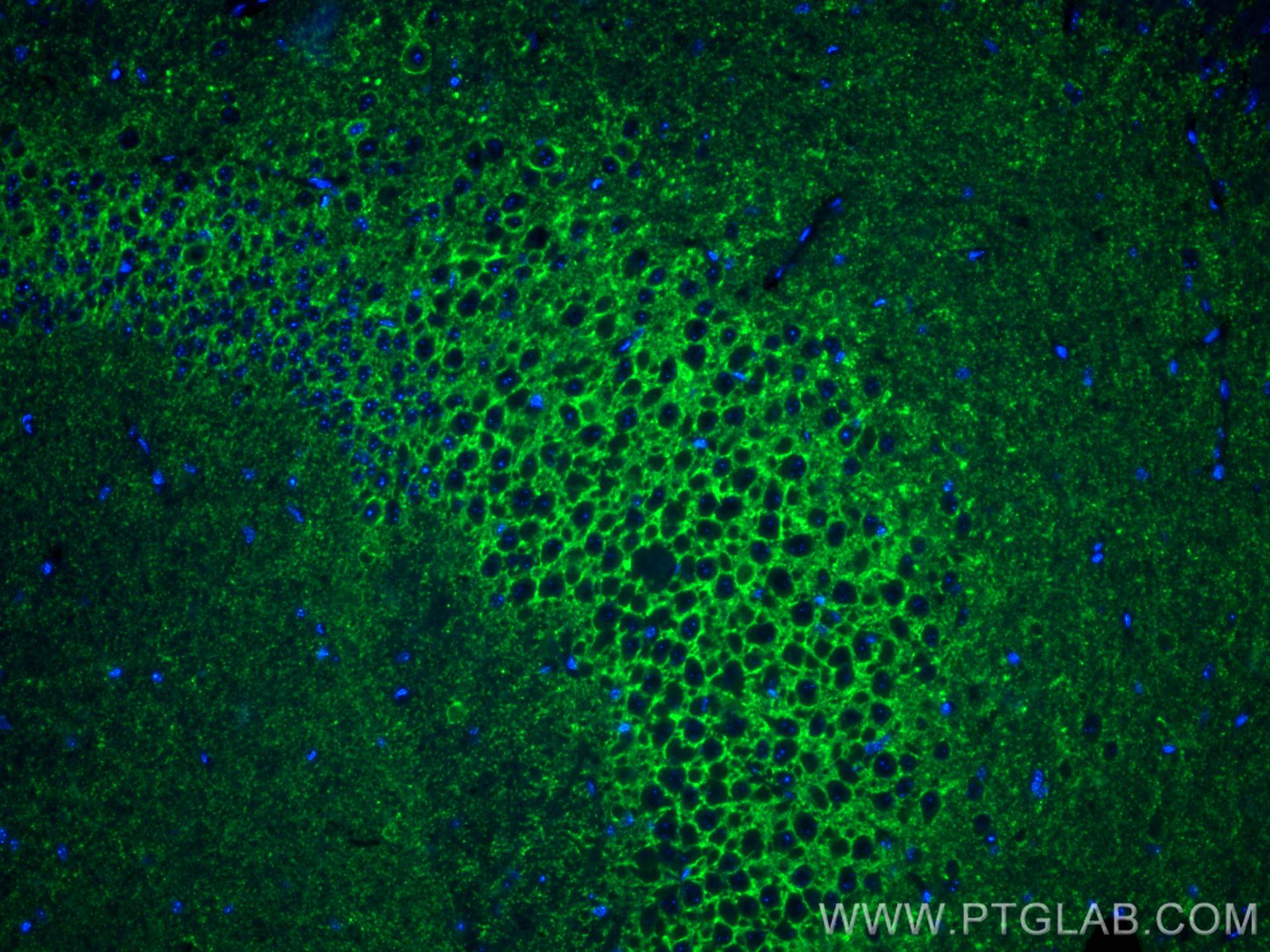CoraLite® Plus 488-conjugated VGAT Polyclonal antibody
VGAT Polyclonal Antibody for IF
Host / Isotype
Rabbit / IgG
Reactivity
human, mouse, rat
Applications
IF
Conjugate
CoraLite® Plus 488 Fluorescent Dye
Cat no : CL488-14471
Synonyms
Validation Data Gallery
Tested Applications
| Positive IF detected in | mouse brain tissue |
Recommended dilution
| Application | Dilution |
|---|---|
| Immunofluorescence (IF) | IF : 1:50-1:500 |
| Sample-dependent, check data in validation data gallery | |
Product Information
CL488-14471 targets VGAT in IF applications and shows reactivity with human, mouse, rat samples.
| Tested Reactivity | human, mouse, rat |
| Host / Isotype | Rabbit / IgG |
| Class | Polyclonal |
| Type | Antibody |
| Immunogen | VGAT fusion protein Ag5843 相同性解析による交差性が予測される生物種 |
| Full Name | solute carrier family 32 (GABA vesicular transporter), member 1 |
| Calculated molecular weight | 57 kDa |
| Observed molecular weight | 57 kDa |
| GenBank accession number | BC053582 |
| Gene symbol | SLC32A1 |
| Gene ID (NCBI) | 140679 |
| Conjugate | CoraLite® Plus 488 Fluorescent Dye |
| Excitation/Emission maxima wavelengths | 493 nm / 522 nm |
| Form | Liquid |
| Purification Method | Antigen affinity purification |
| Storage Buffer | PBS with 50% Glycerol, 0.05% Proclin300, 0.5% BSA, pH 7.3. |
| Storage Conditions | Store at -20°C. Avoid exposure to light. Stable for one year after shipment. Aliquoting is unnecessary for -20oC storage. |
Background Information
SLC32A1, also known as VGAT (vesicular GABA transporter), functions in the uptake of GABA and glycine into synaptic vesicles. GABA (gamma-aminobutyric acid), is the major inhibitory neurotransmitter in the CNS. VGAT transports GABA and glycine into acidic vesicles and localizes to the synaptic vesicle in glycinergic and GABAergic neurons. And VGAT antibodies are useful markers for presynaptic GABAergic and glycinergic neurons.
Protocols
| Product Specific Protocols | |
|---|---|
| IF protocol for CL Plus 488 VGAT antibody CL488-14471 | Download protocol |
| Standard Protocols | |
|---|---|
| Click here to view our Standard Protocols |


